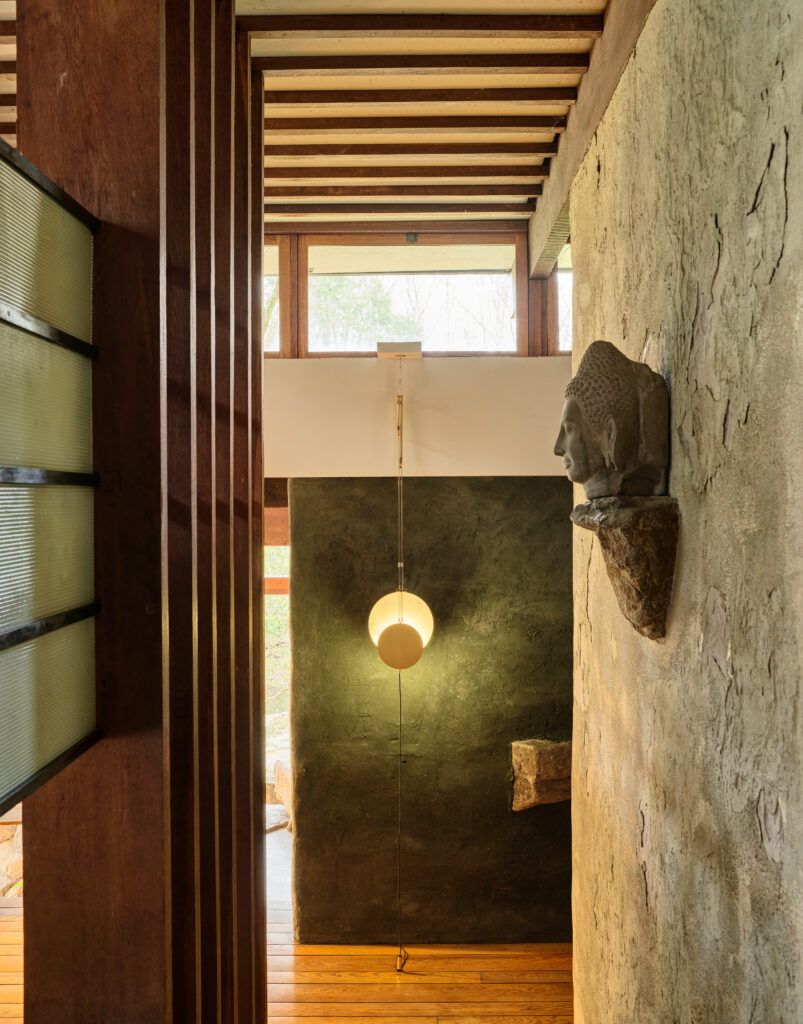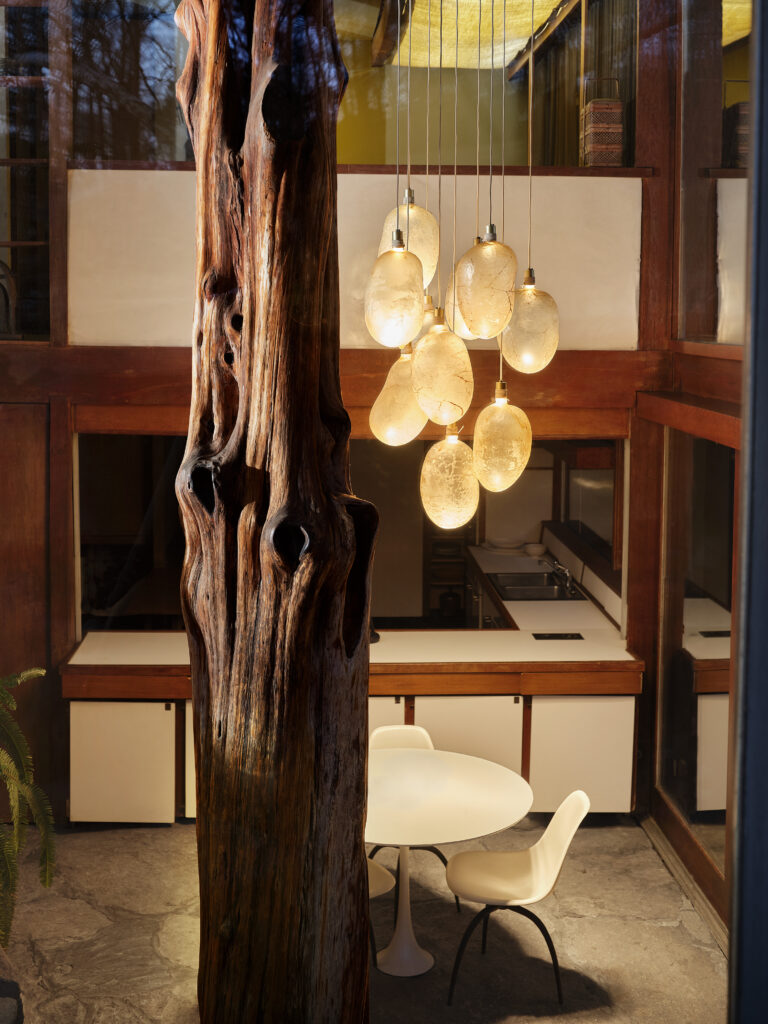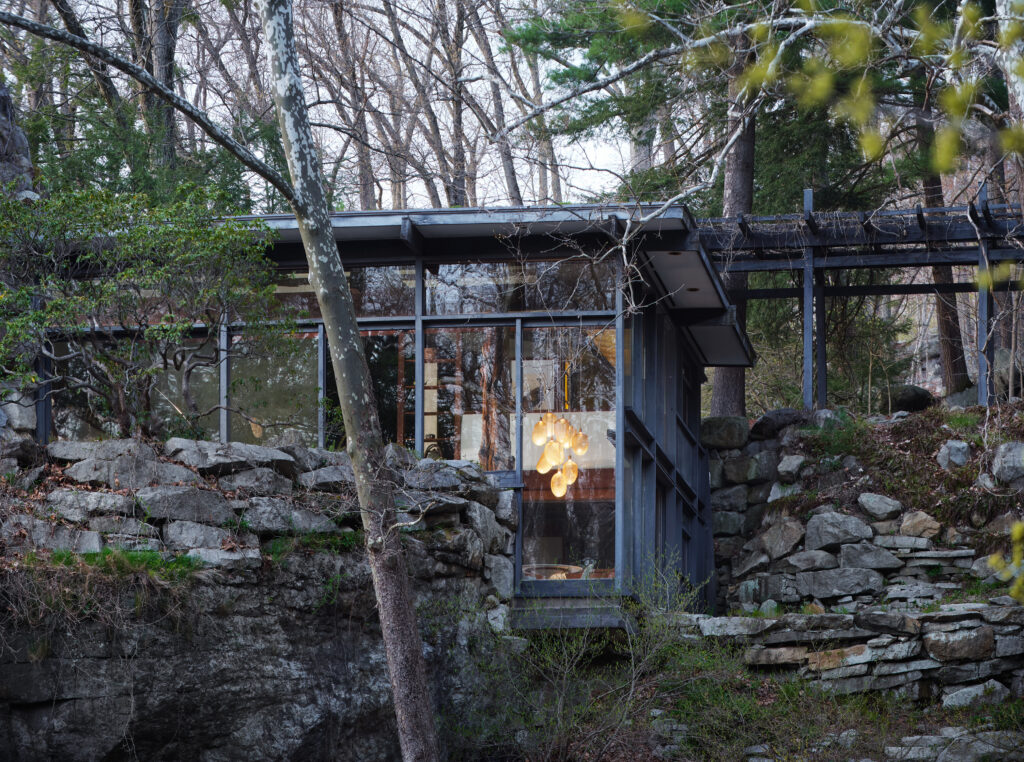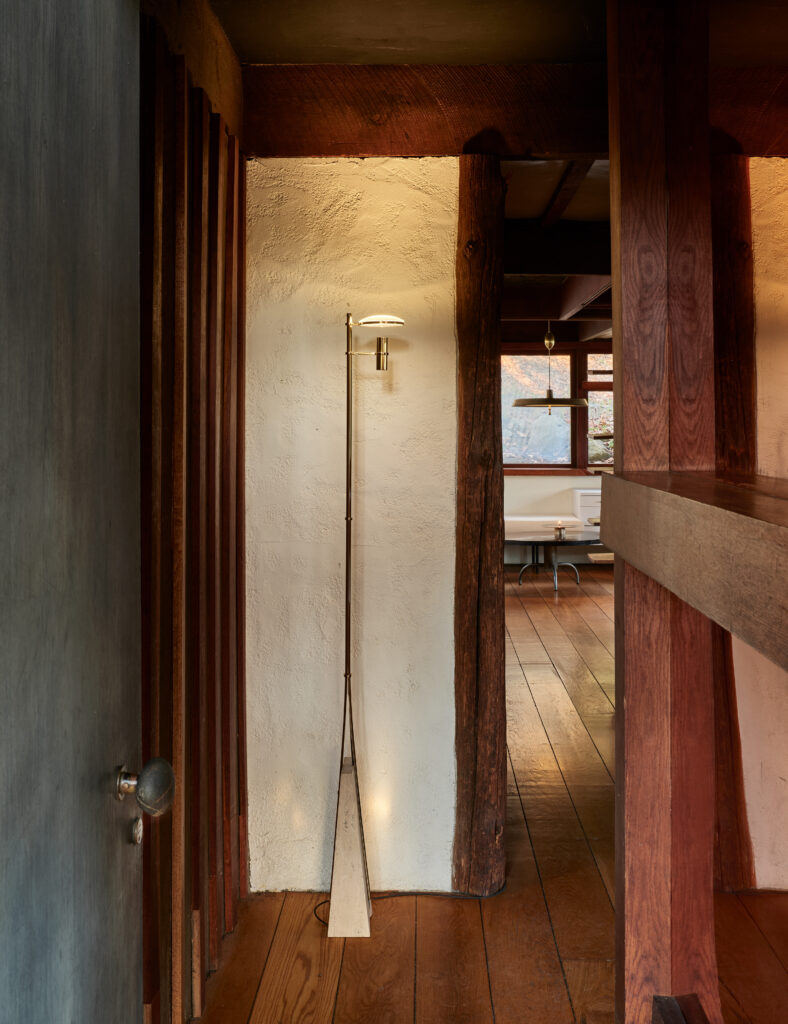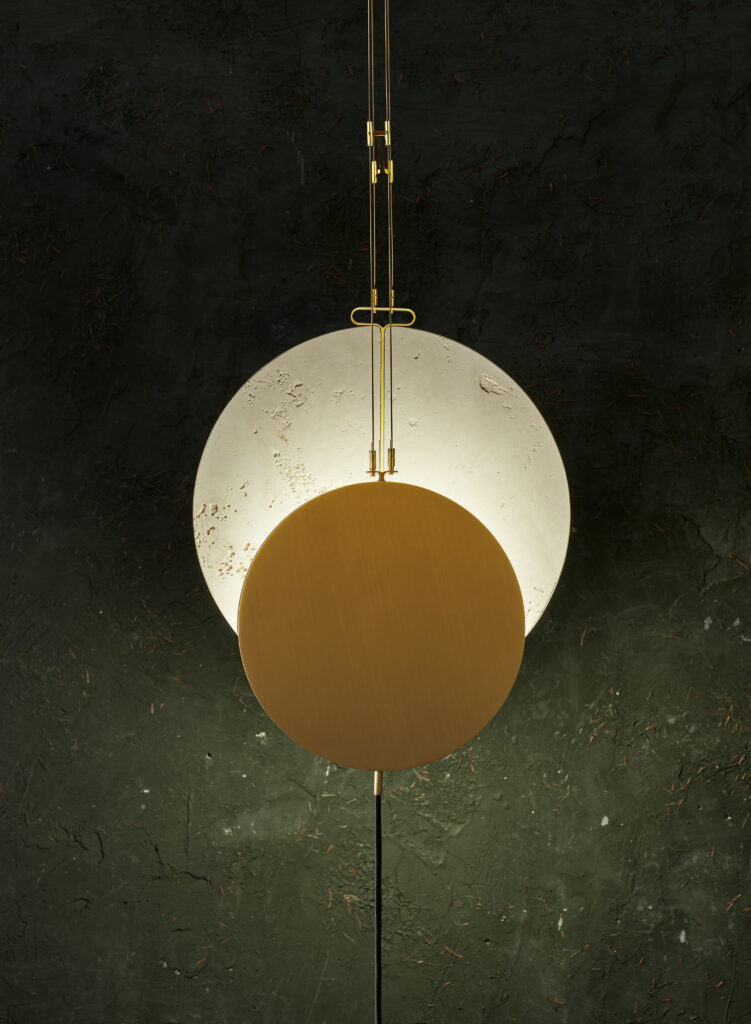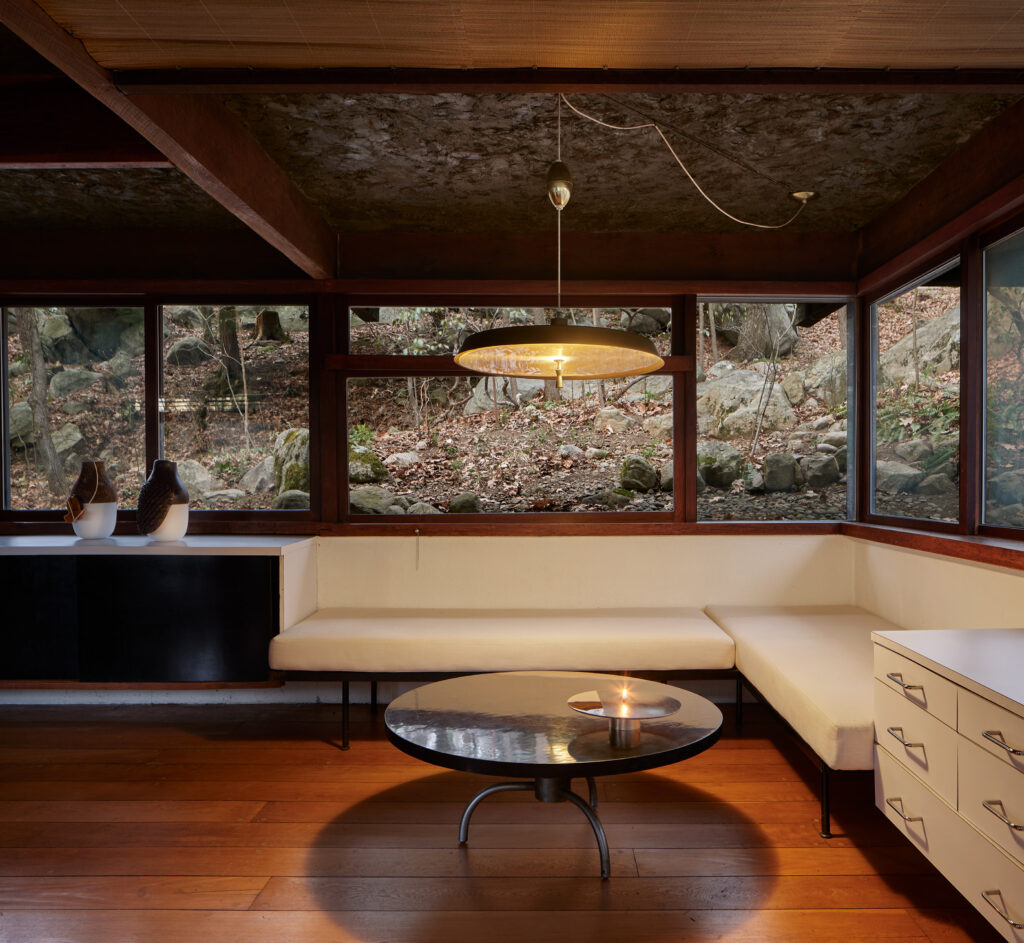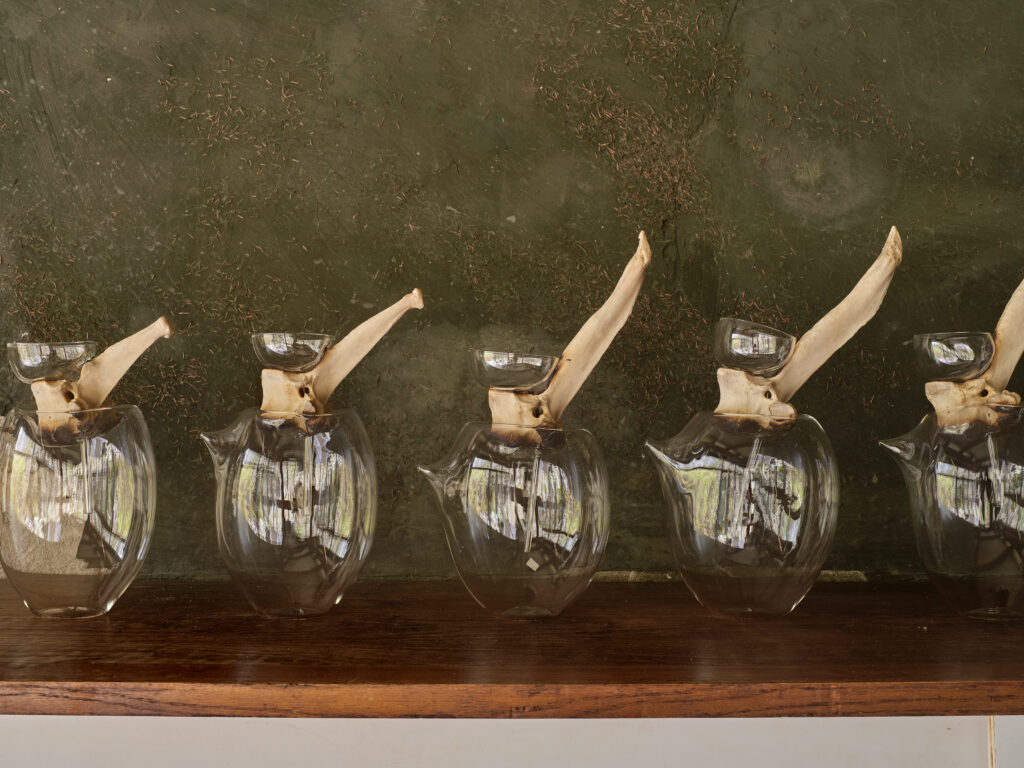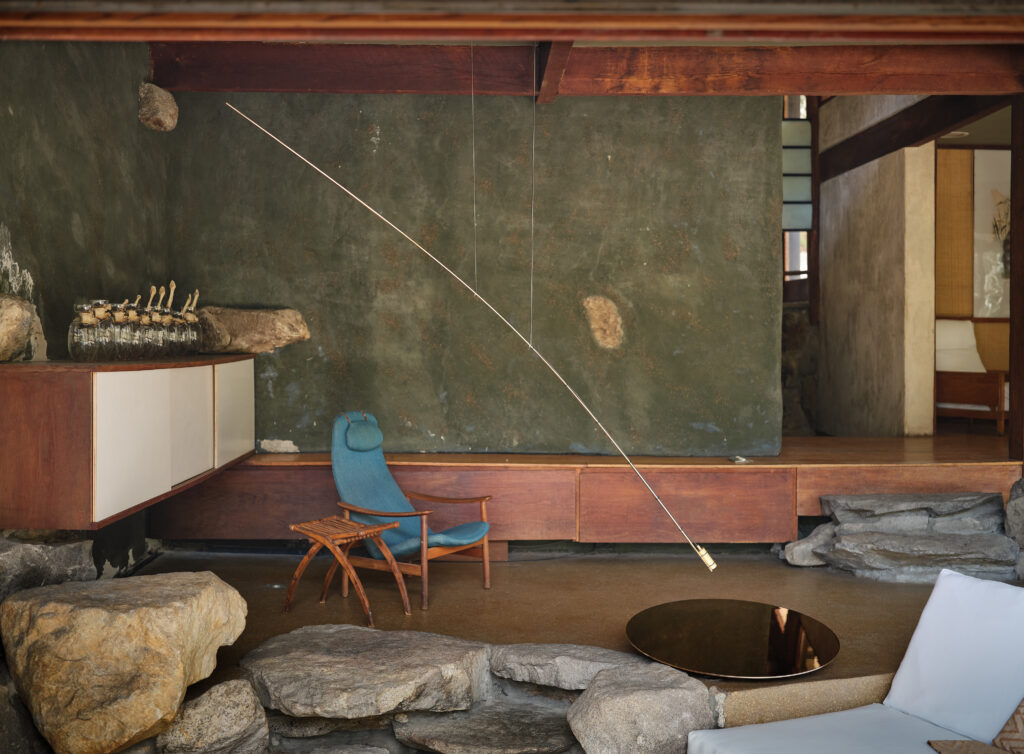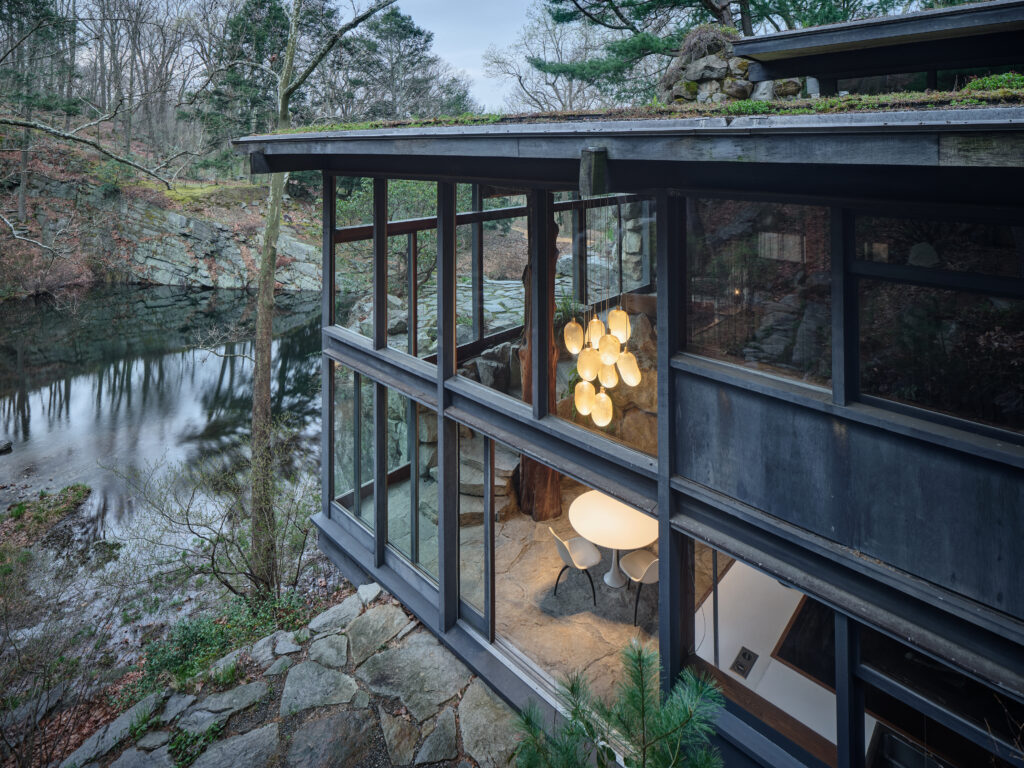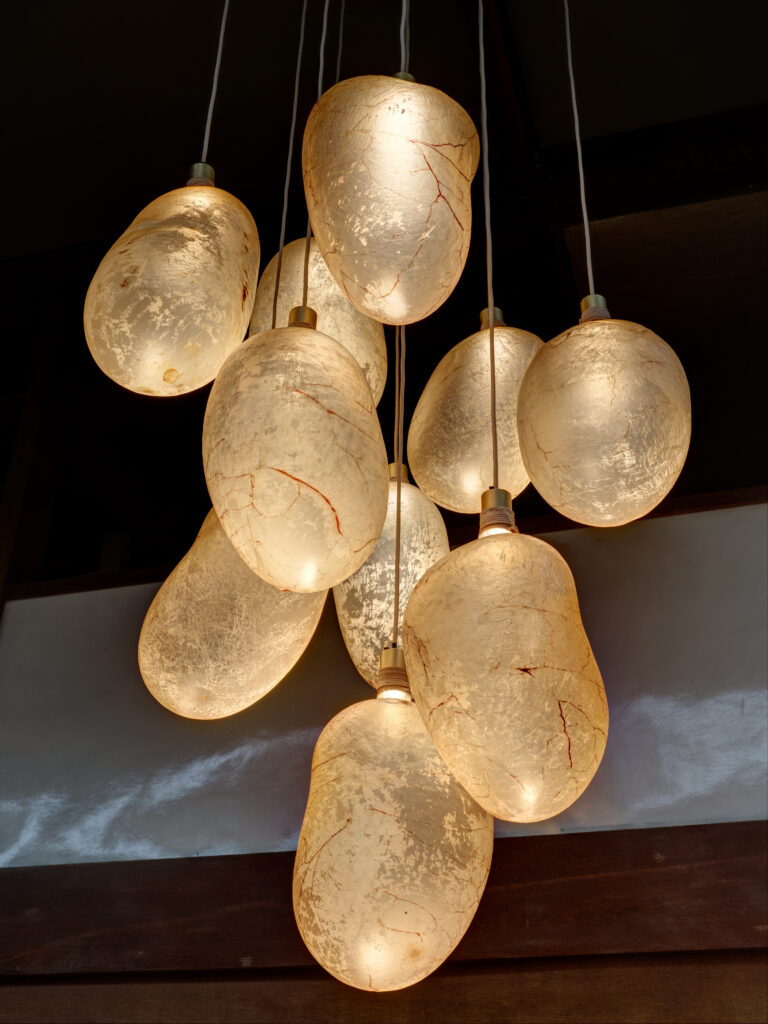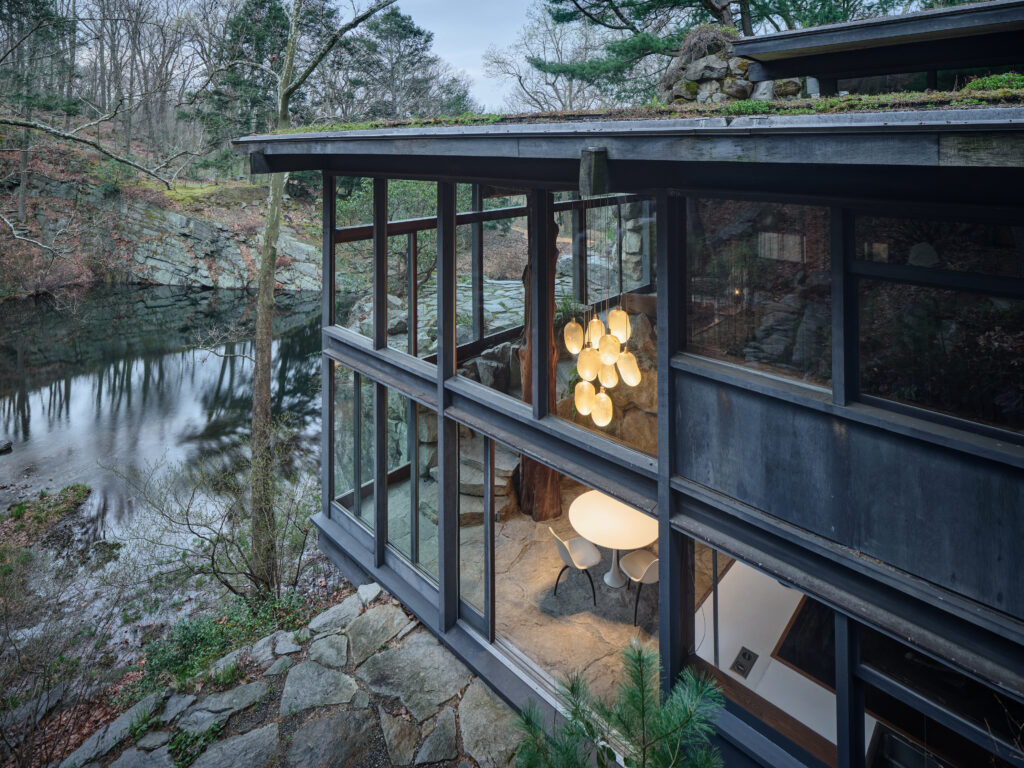
If you believe in the power of design to enhance architecture and vice versa; if you want to witness how the vintage complements the contemporary in the most powerful, natural, seamless way, then make your way up the Hudson River and don’t miss the current exhibition, ‘Formafantasma at Manitoga’s Dragon Rock: Designing Nature’ at Manitoga in Garrison, New York.
Manitoga was the house of American industrial designer Russell Wright and his wife and partner, Mary. While the Wrights, famous tastemakers during the Golden Age of Madmen, believed in the power of industry to enhance the lifestyle of the young generation after WWII, and designed everything—furniture, tableware, glassware, textiles—for the fast pace of the machine. When it came to their own house, however, they wanted to live with the handicraft, in a slow, quiet, ecological world, filled with peace, harmony, and organic quality, far removed from the hectic world of American industry. Set on a hillside and surrounded by 75 wooded acres, Manitoga was Wright’s lifetime project, a work in progress that came to act as the most substantial expression of his personal taste. Completed in the early 60s, it featured a green roof, and indoor columns crafted of tree trunks. Heavy rocks of the site were left intact and incorporated within the house. Merging architecture with nature, integrating the two buildings—the house and studio—within the lush, green wild landscape, is a practice you see in Japan, but rarely in America. Since Manitoga opened to the public in 2004, it has become this rare gem, an inspiring place, where one can truly experience serenity, and the power of design to shape life in the most spiritual way.
Manitoga also exemplifies how a mid-century house should be kept living without intervention, but with care, with a comprehensive preservation, and ongoing projects that come to ensure that it does not freeze in time, but maintains its stability, and is still allowed to keep moving, changing, breathing. I remember visiting Manitoga when it was first opened to the public, thinking that it must had been rough living there. The house seemed rustic. Far from looking ‘comfortable,’ and well-kept, it looked as if it belonged to the past and not to contemporary living. When I visited this week, it felt very different. It is shining, inviting, brought to perfection, to where Wright envisioned it. Every corner has been cared for, kept beautifully. Manitoga has never looked better. In their efforts to keep the house alive, the officials feature an annual solo exhibition by a contemporary artist in residency; this year it is the work of Italian duo Formafantasma, an event conceived in partnership with the neighboring institution Magazzino, the private art space devoted to the Italian art movement of Arte Povera.
The design objects created by Formafantasma helps Manitoga bridge the gap between the vintage and the contemporary. They are spread throughout the house and studio, and while none has been created as site-specific, they are presented in the space in a way that illuminates the house with new light, and vice versa. The space itself gives these objects a new identity, leading us to experience them with new meanings. In fact, I have never seen the work of Formafantasman looking better, more beautiful, more harmonious, more naturally fitting into the space and the landscape seen through the windows. Their objects are pristine, highly crafted in reflecting, finished materials—glass, brass, skin, clay, resin. They look as if they are standing on their own without a permanent connection to spaces. But here, the juxtaposition to nature and the creative space that Wright created for himself, allows us to see rebirth. Furthermore, the context could not have been better, as, like the Wrights, Formafantasma tends to bridge craft and industry, creating objects that allow a new way of living. Their Eclipse Ceiling Light, hanging at the entrance to the mezzanine on a matte black wall, illuminating its texture and framing the view and moves the objects from a strict design statement to a part of a living space (below); The Bladder Chandelier, crafted of cow bladders is seen from outside, illuminating the space with soft light and organic shapes.
Andrea Trimarchi and Simone Farresin, founders of Studio Formafantasma, are based in Amsterdam. They have become known for their experimental material investigations and for exploring the relationship between tradition and local culture, critical approaches to sustainability and the significance of objects as cultural conduits. Combining the vintage and the contemporary through an educated and curated eye of the curators of both museums, and through the great taste of Formafantasma’s dealers Rome-based Galleria Giustini/Stagetti make this exhibition a rare experience of the unlimited possibilities created when the vintage meets the contemporary.
All Images courtesy The Russel Wright Design Center; photo by Michael Biondo. Courtesy of Manitoga / Michael
Biondo Photography.
